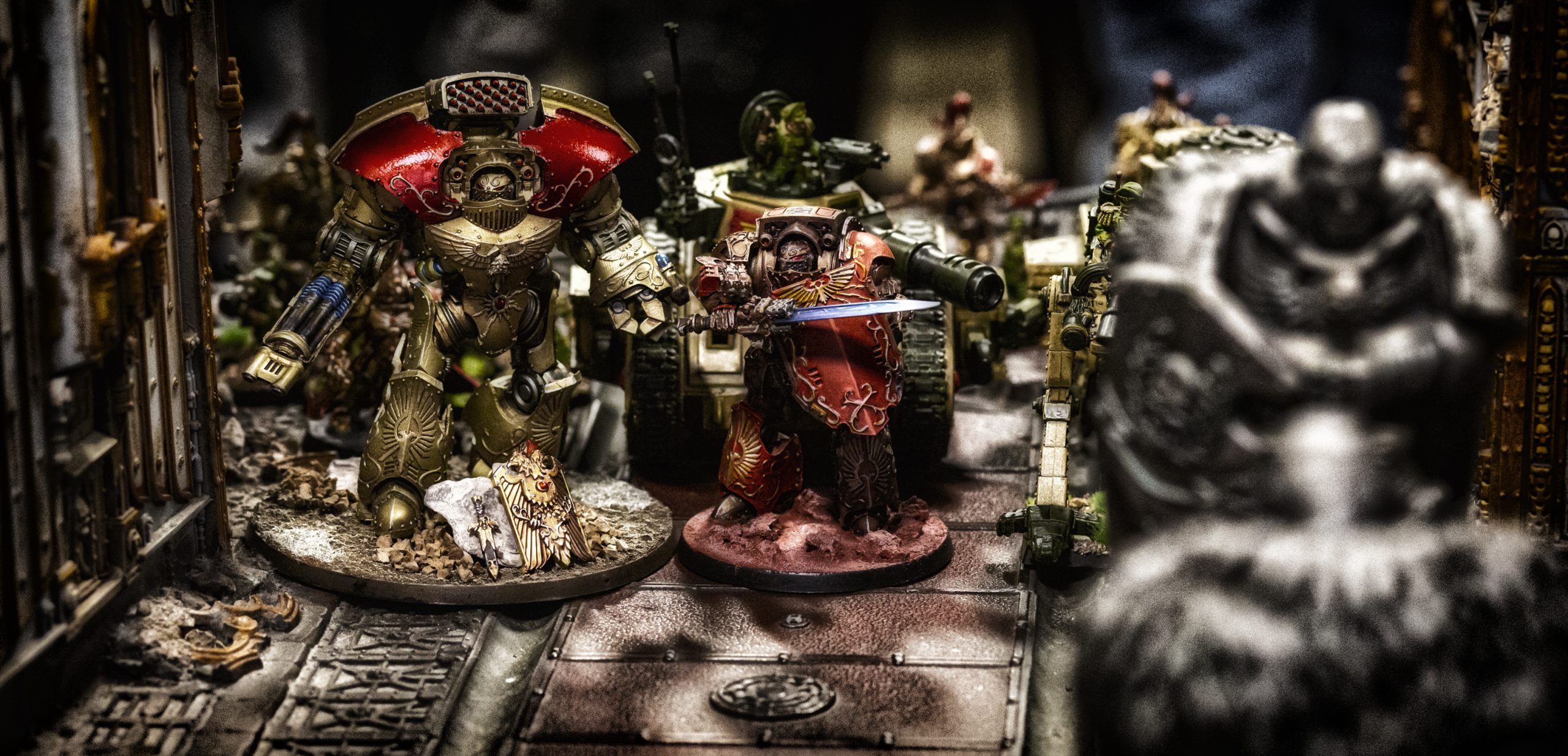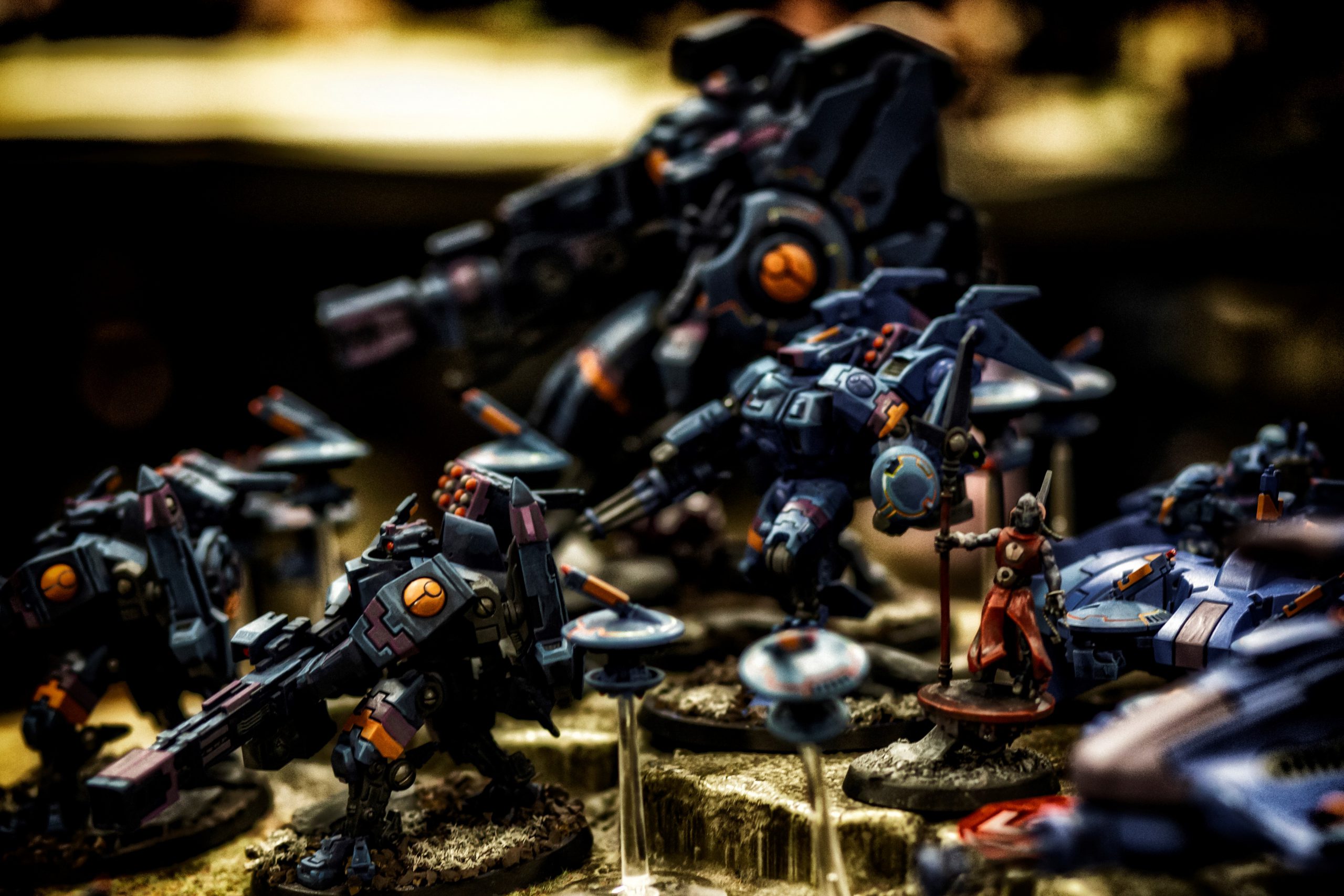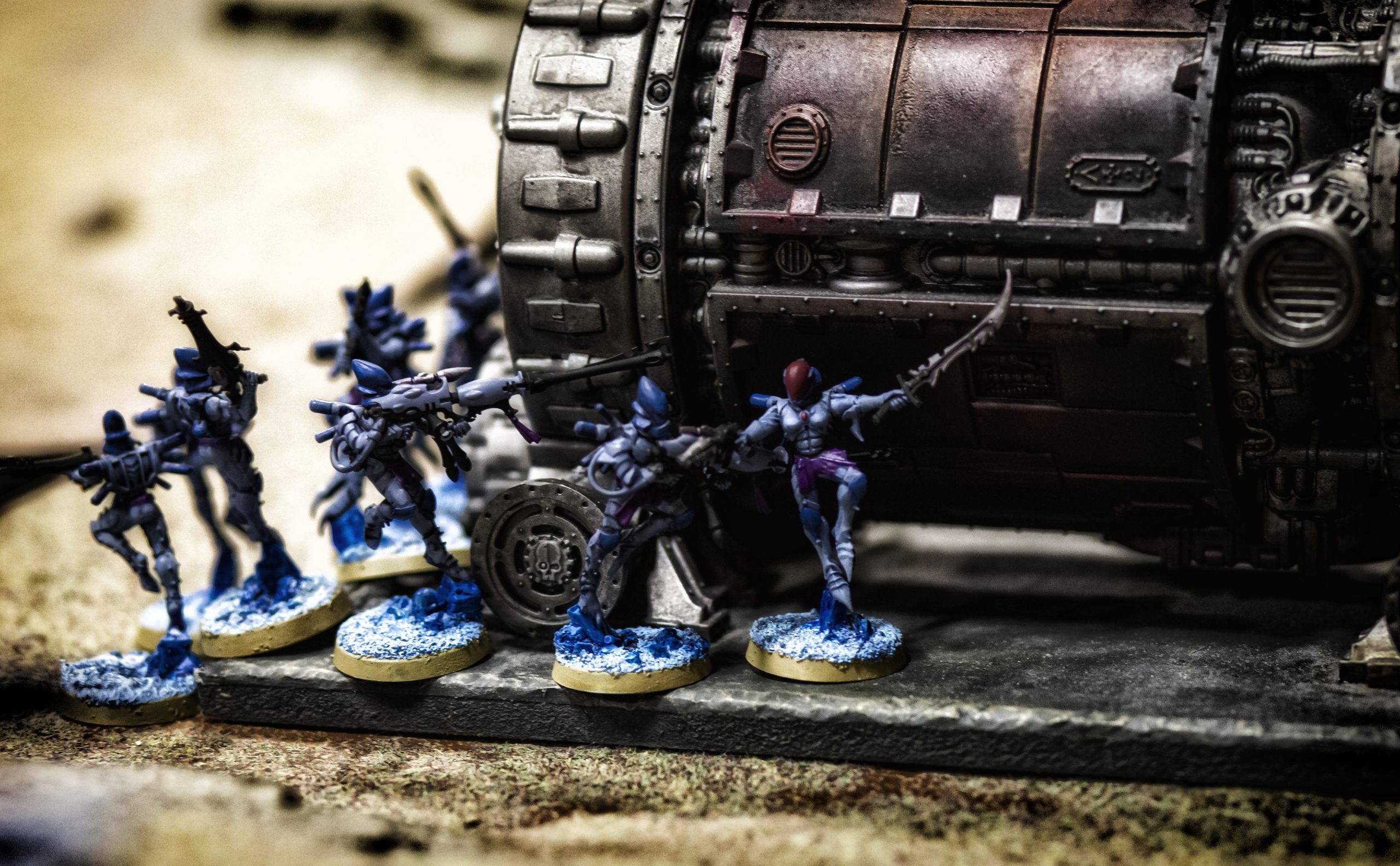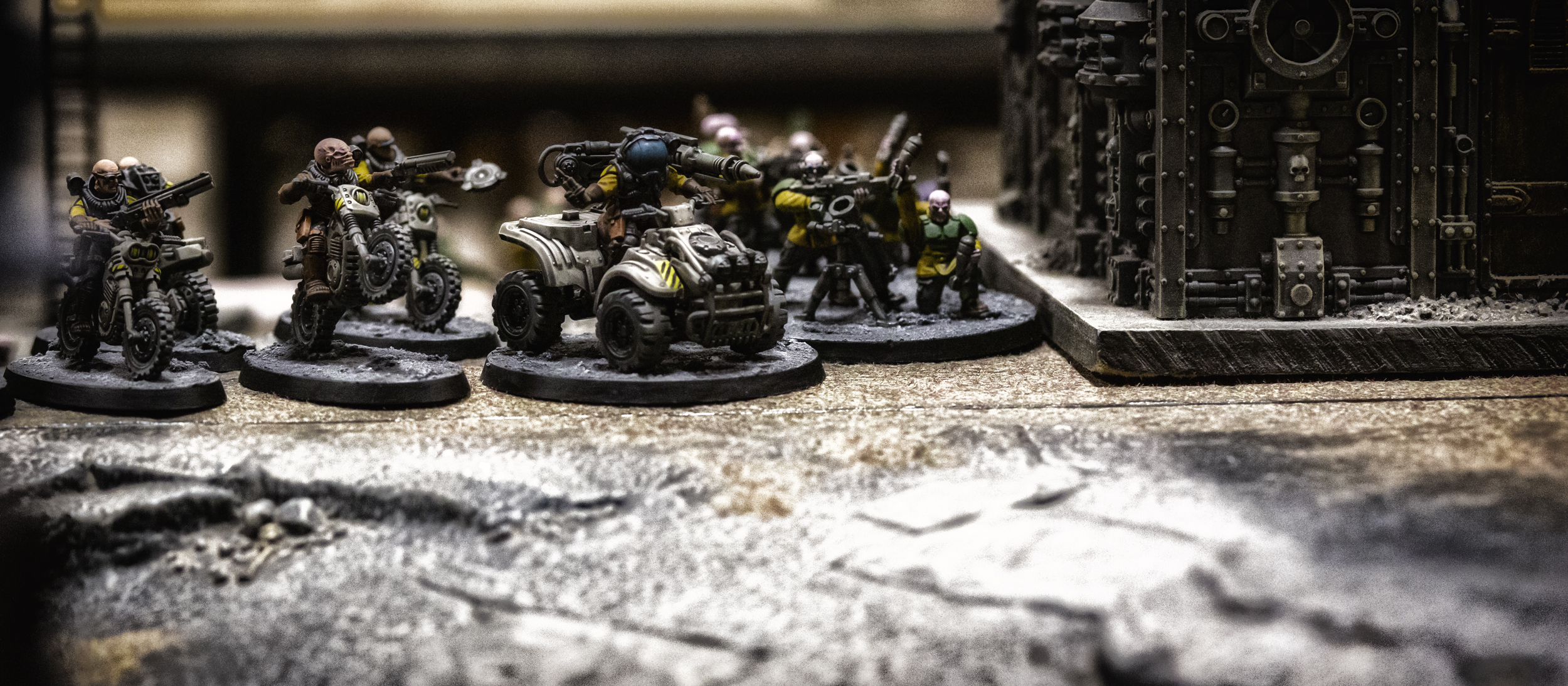Warhammer 40,000 9th Edition — A review for newcomers
Warhammer 40,000, Games Workshop’s flagship offering, has been through many different iterations in the twenty-plus years it has existed. From its humble beginnings as a small scale skirmish game (with a completely different name) Warhammer 40,000 (or 40k, as many of its players refer to it for the sake of speed) is a behemoth in the tabletop miniatures scene. Games Workshop, as a company, has soared in recent times, making it to the FTSE 250 for the first time. Players who are familiar with the mess of 7th edition may appreciate that this is quite the achievement and it has happened, in large part, due to the new direction the 8th edition of the game took back in 2017. Providing comparative simplicity of rules, but still with plenty of depth, 8th edition was a ruleset that had mass appeal in spades. With the model range for 40k being so broad, and gorgeous, that was all it took to propel the game, and the company, to the next level it seems. Having said all that, the release of the 9th edition of the game is both a great opportunity, as well as a big risk.
This is a review of the game for those who are new to it, or who have been away for some time. If you’re a veteran of recent editions of 40k you can find a piece that looks at the changes between 8th and 9th edition here.
Playing the Game
Getting back to basics, the game of Warhammer 40k is played in a space populated with various bits of terrain (or whatever you have lying around in your kitchen cupboards). Two players control an army of miniatures each and take turns to move their armies across the board, shooting their opponent’s figures or mashing them up in close combat as appropriate. The game is played across five battle rounds, with each player taking a turn in each battle round. Each turn consists of seven phases; the command phase, the movement phase, the psychic phase, the shooting phase, the charge phase, the combat phase and the morale phase.

The command phase is both the first thing to happen in the turn and the easiest to explain. Right now, nothing much happens in it. The player whose turn it is gets a command point (more on those later) and that’s about it. At the moment everyone is playing the 9th edition rules with 8th edition armies. This is a new phase, added in 9th edition, so none of those 8th edition rules make reference to it. It’s expected to gain more significance when the 9th edition army-specific rules are released over the coming year.
In the movement phase, the player whose turn it is can move every model in their army a distance, in inches, up to their movement characteristic (a tape measure is fully required for 40k). Most models are part of a unit that must stay close to each other when they move. There are a few other types of movement that you can do other than the basic. Models can advance; moving extra distance at the expense of being able to shoot their guns or charge enemy models. Alternatively, if your models start the turn locked in combat with the enemy they can make a fall back move, getting out of the danger zone, again at the expense of shooting or charging into combat with someone else.
The psychic phase is when those units or models in your army with the ability to manipulate the fabric of the warp (basically a dimension of nasty stuff that lives alongside our own dimension) use that power to wreak havoc on the enemy. Basically they’re space wizards – who doesn’t love space wizards? Each one of your psykers will have a few different abilities to choose from and they go off if you can roll above a certain number on two six-sided dice, and if enemy psykers don’t disrupt your efforts. Not every game will have psychic phases as psykers are fairly rare and some armies don’t have any access to them at all.

Once the space wizards have had their fun it’s time to shoot things. Most models in the game have some form of ranged attack and these ranged attacks have their own statistics; telling you the range of the attack, how strong it is and how well it penetrates the opponent’s armour. The player whose turn it is will nominate their units in turn to shoot, declaring targets and rolling dice (sometimes absolute bucketfuls) to establish, first, how many shots hit. Once you know how many shots hit, you then have to roll those dice again to see how many are strong enough to overcome their target’s toughness (as you would expect, infantry models are usually much squishier than armoured targets like tanks, planes or battlesuits). Finally, those dice that pass the bar must be rolled one last time, this time by the player who owns the unit being shot at, to see whether the unit’s armour is strong enough to withstand the attacks. Any of these armour saves that fail result in damage being done to the targeted unit, usually causing one or more models to be removed, or reducing the effectiveness of larger targets.
If you’re one of those people who really wants to see the whites of your enemy’s eyes when you ruin their day, never fear, the charge phase has you covered. Once all the shooting has happened, and the smoke clears, units can try and charge any enemy units that are close enough to them. To make a charge, the player who controls the charging unit rolls two dice to see how far the unit can move. If that roll is high enough to reach their target the charge is successful and the unit moves up to the unit that is the subject of their ire. If it isn’t, well, bad luck; the unit stays exactly where it is, a state of affairs that can often mean very bad things for them if they’re out in the open.
After all charges have taken place it’s time to get your fight on. Models that are within 1” of each other can attempt to smack their opponents about the head. Combat begins with any units that charged this turn; a big advantage of charging your opponent, rather than being charged, is that you get to fight first, potentially weakening or destroying the enemy before they can fight back. Combat works, in a mechanical sense, similarly to shooting. Each combat weapon has a profile that determines its strength and armour penetration and you go through the same process of rolling to hit, trying to convert those successful hits into wounds and then your opponent making their saving throws against those wounds.

With all that done, all that’s left is to count the cost. In the Morale phase, each player rolls a six-sided die for each unit that lost models that turn. Add the number of models lost to the number rolled and compare the total to the unit’s leadership characteristic. If it is equal to or lower they hold firm in the face of the enemy. If it is higher, however, they may crumble under the pressure. One model flees (being removed from the game straight away) and a die must be rolled for every remaining model. On a 1 that model also flees (or a 1 or a 2 if the unit is below half strength).
One of the strengths of this edition of the game (and of 8th edition) is that, fundamentally, those are the core rules of the game. There are nuances to the game about different types of weapons, flying units, transports (tanks and such that can hold other units) and those sorts of things but the actual section of the hefty Warhammer 40k rulebook that covers basic game rules is only 29 well-spaced pages. Once you’ve got your minis you can be up and playing fairly quickly.
This is not to say that 40k is a simple game. There are layers upon layers of complexity on top of those core rules. The effect that terrain has on the game, for example, or the individual quirks of the specific mission that you’re playing, or the vagaries of how you actually go about building a legal army from the miniatures you have available. On top of this there are the special rules for your army and for your individual units. Space Marines, for example, can re-roll failed morale checks, and get additional armour penetration on different weapons depending on which battle round it is. Necrons can return fallen warriors back to life at the start of their turn and Orks can re-roll charges as well as generating extra attacks whenever they roll a 6 to hit with shooting attacks. Those are just the army-wide abilities; individual units also have rules to remember for them, or sometimes aura abilities that affect those nearby. A unit of Space Marines standing near a captain, a lieutenant and a chaplain, for example, can reroll 1s to hit, 1s to wound and use the chaplain’s leadership instead of their own. It’s easy to see how the rules can stack up and it can become a lot to remember.

Lastly, there are stratagems. Each army has a pool of Command Points at the start of the game and these can be spent on stratagems; one-shot abilities that can have powerful effects. There are some universal ones such as re-rolling one die, or automatically passing a morale test for a unit but each army also has an, at times, dizzying array of other stratagems to choose from.
If all of this sounds like a lot then don’t worry. The design of the game makes it fairly modular and you can choose to include or exclude elements to make the game as simple or complex as you want. Confused by the stratagems? Just don’t play with them, or just play with the seven universal ones. Terrain a bit much to remember? Skip it or play with a simplified set of rules with less to keep in mind. There are different game modes from Matched Play (for competitive play, with emphasis on fine balance of armies) to Crusade (a campaign mode where your units will improve over time) to Open War (basically do what you like). Each suits different styles of play or player and has different levels of complexity. The point is, 40k 9th edition is actually built in such a way that it is a good toolkit for playing at whatever level suits the people playing it.
Is It Any Good?
I think it’s fair to say that Warhammer 40k is not, mechanically, the best miniatures wargame around. Games Workshop’s insistence on sticking with gameplay where one player uses their entire army and then their opponent uses their entire army does hold it back. A lot of modern wargames of this ilk use an I-go-you-go model where players take it in turn to activate individual units or models; making tactical choices and sequencing really important. In 40k‘s defence, it is often larger scale than a lot of those types of games and its model keeps the sequencing and rules fairly simple.

If there are mechanically better wargames than Warhammer 40k around then why should you play it? There are three major reasons really. Firstly, comes the lore of 40k. One of the reasons the game is as popular and as enduring as it is is how rich and appealing the worldbuilding is. Set in the grim future of the 41st millennium (grimdark is a portmanteau coined to reflect the tone of 40k), the galaxy is in a state of constant war. Each of the factions in the game is thought out with incredible depth and the whole thing is backed up by an extensive (and I mean extensive) catalogue of novels and audiobooks called the Black Library. The interaction between the lore and the game is a great appeal of the game; bringing the characters from the fiction to the table top and pitting them against each other. The whole thing is very evocative and incredibly easy to get caught up in. There are a variety of primers out there that will give you a good introduction in a short space of time.
Secondly, there are the models. Games Workshop has been in this game a long time and their miniatures are some of the most impressive in the space; full of character and detail. You only have to have a browse through their webstore to see the vast array of different miniatures available and how incredible they look. Seeing your army (fully painted if you’re less slack than I am) on the tabletop is a deeply satisfying and rewarding thing before you even get to playing the game. All of the photos in my 40k pieces were taking at Warhammer World (Games Workshop’s free-to-use event hall in Nottingham) and are pretty representative of what armies painted by a range of people from distinctly average to good look like on the tabletop.

Lastly, there is the support. 40k is, by a long way, the most popular tabletop wargame on the planet and Games Workshop maintains its popularity with a steady stream of new releases. There are always new models to look at, new rules to debate and new game modes and missions to keep things fresh. Wherever you are reading this there’s a good chance you’ll be able to find someone to play against and you can invest in the hobby knowing that 40k is not a flash in the pan that’s everyone’s going to stop playing in six months’ time.
If all of that has piqued your curiosity and you want to know more about how to go about getting started in the hobby then head on over to my piece about exactly that.
Photos provided by Ben Archer.
You can purchase the Core Book, 9th Edition on Amazon.
Comments are closed.